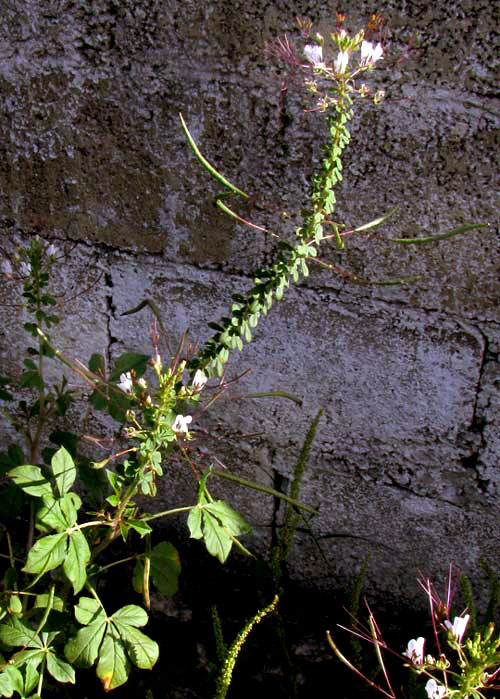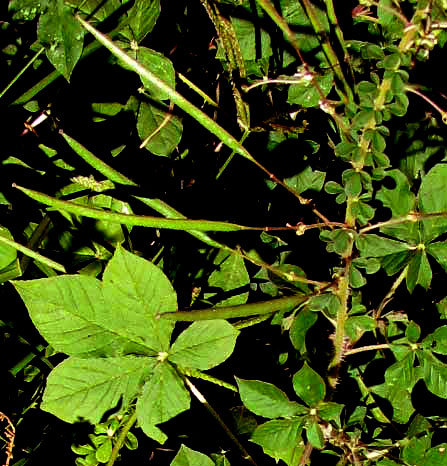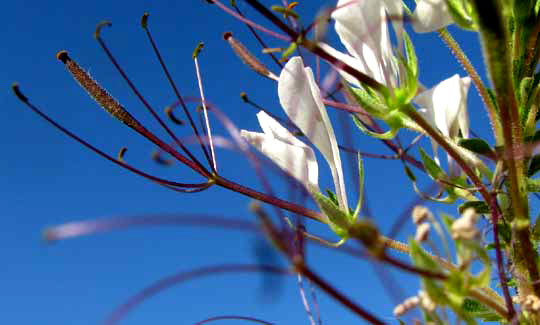Excerpts from Jim Conrad's
Naturalist Newsletter
from the October 24, 2010 Newsletter issued from Hacienda Chichen Resort beside Chichén Itzá Ruins; limestone bedrock; elevation ~39m (~128ft), N20.675°, W88.569°; central Yucatán state, MÉXICO
AFRICAN SPIDERFLOWER
Next to a stone wall along a little backstreet on Pisté's south side I spotted the curious weed shown below:

One curious thing about it was its long, slender fruits held more or less horizontally below the white flowers at the inflorescence's top. A fruit close-up is below:

If you know your Northern wildflowers you'll recognize that the fruits are similar to the long, slender capsules often produced in the Mustard Family. However, certain features of this plant are very un- mustardy. For example, Mustard-Family fruits don't arise from such long, stiff stalks, and I don't recall any mustards with palmately compound leaves like these -- leaflets arising together at the tip of a petiole, as with Horsechestnut and Virginia Creeper leaves. Maybe you also know that the huge Mustard Family is mostly found in temperate and subarctic environments, not here in the tropics. Therefore, it looks like we have something close to a mustard, but not.
When I got off my bike and looked closely at the flowers it was clear that I had something other than a weedy mustard plant. You can see what I mean below:

The flower is bilaterally symmetrical (zygomorphic), with each flower bearing four white petals held skyward, while Mustard Family blossoms are radially symmetrical. The slender but thickened and fuzzy thing at the left in the picture is an ovary, or future fruit, which would look OK in a mustard flower, except for the fact that several matchstick-like stamens arise from the ovary's stalk (gynophore). Mustard flowers just don't do that. Stamens arising from the middle of an ovary's too-long stalk just look crazy to anyone unfamiliar with this family.
Once I'd seen the zygomorphic flowers and long gynophores I knew that we were dealing with something in the Caper Family, the Capparidaceae, very closely related to the Mustard Family. If you've ever eaten capers, you've eaten pickled flower-buds of a member of this family. However, what we had here wasn't the caper-producing species.
It was the African Spiderflower, *GYNANDROPSIS GYNANDRA, an Old World species now widely distributed as a weed in the world's tropical and subtropical regions. In Africa a form of this species is cultivated as a leafy vegetable, though it needs repeated boilings to make it palatable. Sheep and goats relish it. In India the seeds are used as a substitute for mustard and yield good oil. In some parts of the world it may be a serious weed but around here I've only seen it next to that one stone wall in Pisté.
There's a second species of genus Gynandropis native to Central and South America, Gynandropsis speciosa, but that species is hairless, or "glabrous," while our Pisté plants are definitely very hairy.